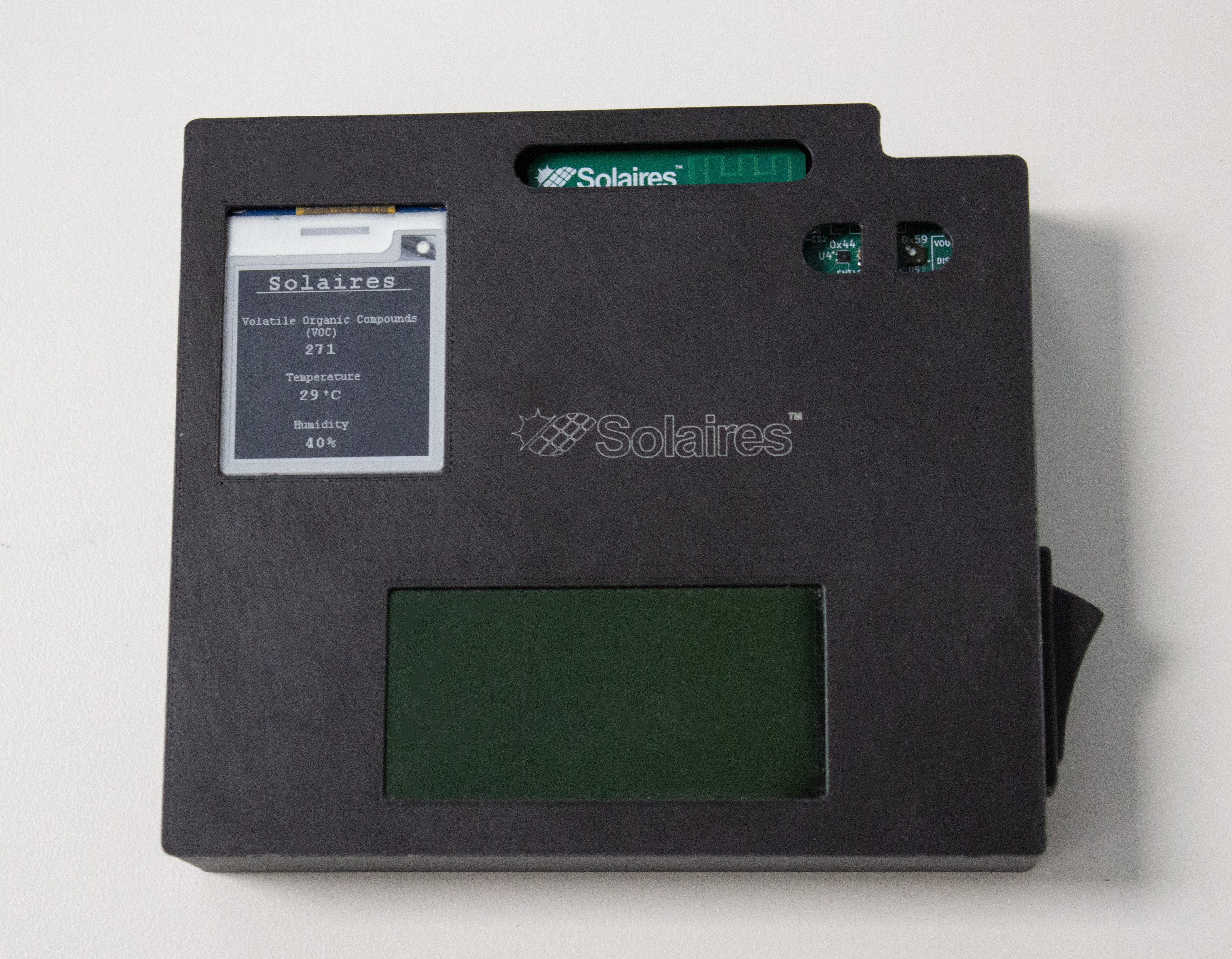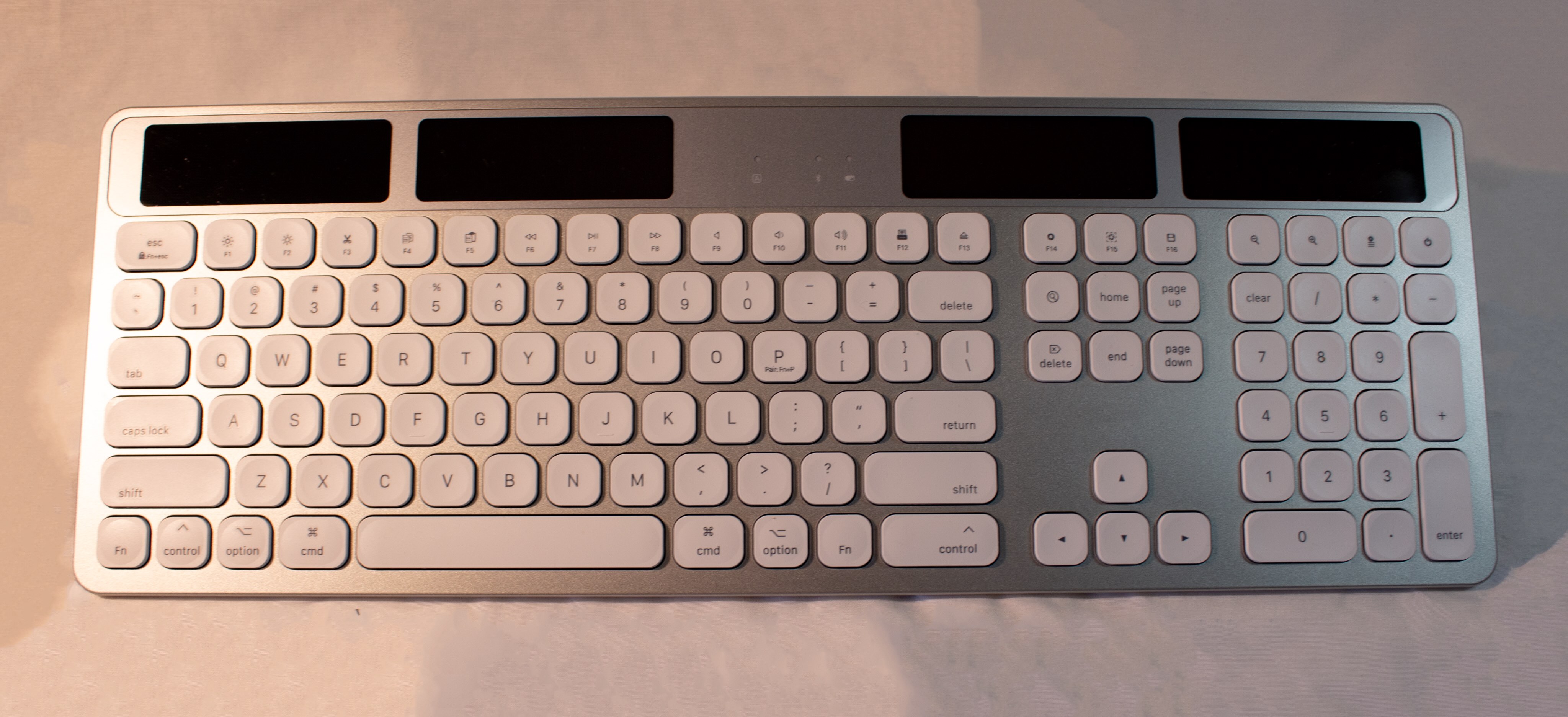A New Era of Energy: Decentralization, Digitization, and Design
Redefining how energy is generated, used, and integrated.
Solaires Team | Victoria, B.C | July 30th, 2025
The way we produce, manage, and interact with energy is undergoing a fundamental transformation. Photovoltaics, energy storage, the Internet of Things (IoT), and embedded electronics are no longer developing in isolation. They’re evolving together, feeding off each other’s momentum and opening doors to innovation at a pace the energy sector has never seen before.

This convergence marks a new chapter in the energy transition
defined by decentralization, digitization, and design. It’s not
just a matter of improved efficiency or incremental upgrades.
These shifts are reshaping the very structure of our energy
systems and catalyzing a wave of product innovation across
sectors. In residential settings, we’re seeing the rise of rooftop
PVs and integrated smart home technologies. Meanwhile, wearable
and consumer devices are increasingly powered by ambient light and
other alternative energy sources, reducing reliance on traditional
energy infrastructure.
At the heart of this shift is a simple but powerful idea: that
energy generation and consumption should be more intelligent and
seamlessly integrated into our daily lives.
This convergence marks a new chapter in the energy transition
defined by decentralization, digitization, and design. It’s not just
a matter of improved efficiency or incremental upgrades. These
shifts are reshaping the very structure of our energy systems and
catalyzing a wave of product innovation across sectors. In
residential settings, we’re seeing the rise of rooftop PVs and
integrated smart home technologies. Meanwhile, wearable and consumer
devices are increasingly powered by ambient light and other
alternative energy sources, reducing reliance on traditional energy
infrastructure. companies which can pick and choose their testing
conditions.
At the heart of this shift is a simple but powerful idea: that
energy generation and consumption should be more intelligent and
seamlessly integrated into our daily lives.
Decentralization in Energy: Power Where It’s Needed Most
Historically, energy systems were designed around large, centralized
power plants feeding electricity to passive consumers. That model is
being rapidly replaced by decentralized ecosystems where generation
is distributed, devices are interactive, and users are more
involved, actively monitoring and managing energy consumption
through smart devices, choosing energy-efficient appliances and
technologies, and adjusting usage to align with renewable
availability. This active engagement empowers consumers and drives
demand for new technologies. By adjusting usage to align with
renewable availability, it fosters collaboration across industries
such as IoT, energy storage, and materials science. Together, these
collaborations accelerate innovation and enable significant leaps in
clean energy solutions.
Decentralization is happening not only at the grid level, but also
within individual products. As energy generation moves closer to the
point of use, new possibilities emerge for device-level autonomy.
Generating energy exactly where it’s needed reduces transmission
losses, lowers infrastructure costs, and enhances system resilience.
Photovoltaics, in particular, play a central role in enabling this
shift. As the cost of PV technologies has fallen and the
efficiencies have improved, solar energy is no longer confined to
utility-scale farms or rooftop panels. Lightweight and efficient
photovoltaics, like those developed at Solaires, are unlocking a new
layer of energy generation that is directly embedded into products
such as smart door locks, CO and VOC sensors, remote controls,
keyboards, and many more. This device-level energy autonomy paves
the way for greater independence from traditional power
infrastructure, one application at a time.

Powered entirely by our lightweight PVModules, this VOC sensor
operates without external power sources.
Attribution: Solaires Enterprises Inc.
Digitization in Energy: Smarter Systems, Seamless Power
Digital transformation is reshaping energy systems. Photovoltaics,
energy storage, IoT, and embedded electronics are advancing
together, each accelerating progress in the others. Sensors and
cloud platforms are making energy systems smarter and more adaptive.
Devices can now optimize performance in real-time based on usage
patterns, grid conditions, and user behavior. This intelligence
requires integrated low-power solutions, distributed storage, and
connected infrastructure, reflecting cross-industry collaboration
toward clean, efficient technology.
Smart energy management systems are compelling in microgeneration
contexts. Devices that power themselves from ambient light, for
example, no longer need traditional charging infrastructure. They
can operate autonomously. Solaires PVModules enable this kind of
self-sufficiency, powering devices directly for indoor and ambient
light. When combined with technologies like low-power
microcontrollers (MCUs), power management ICs (PMICs), and IoT
platforms, these systems can store energy they need and
intelligently communicate when and how it’s used. This kind of
intelligence is crucial for scaling the next generation of low-power
electronics, especially in sectors like smart homes, health tech,
industrial monitoring, and sustainable architecture.
At Solaires, this intersection of photovoltaics and digital
intelligence is at the heart of what we do. Our PVModules are
designed to integrate directly into digital systems. This enables
self-charging sensors, extended battery life, and new use cases
where traditional energy sources would be too bulky or
cost-prohibitive.
Design in Energy: Making Clean Tech Fit Real Life
Design is often missing from energy conversations. As PV and other
cleantech solutions enter consumer products, design becomes
essential. Not only in terms of physical form, but in how technology
fits into real-world environments and user experiences.
Today's innovators aren’t just seeking performance; they want
materials that can adapt to their vision. That's why design
flexibility is critical. By prioritizing design, companies can
accelerate adoption and reduce friction in the product development
stage. This is especially true in industries where aesthetics or
spatial constraints previously limited the integration of energy
harvesting technologies.
Our PVModules are designed to be adaptable, making integration
seamless across a wide range of products and use cases. Our team
works closely with partners to support implementation, ensuring the
technology fits both their design vision and functional
requirements. This is helping build a new standard for clean
technology that’s deeply embedded in the products and systems people
use every day.

One practical use case for Solaires’ PVModules is their integration
into keyboards, enabling self‑sustaining operation powered entirely
by light.
Attribution: Solaires Enterprises Inc.
The future of smarter, connected energy
The convergence of PV, storage, smart systems, and embedded
electronics is more than a technical evolution. It’s a structural
and cultural shift within clean technology, allowing for faster
iteration, more collaborative development, and deeper integration of
energy solutions into society.
This shift also helps bridge the historical divide between energy
infrastructure and product innovation. As technology stacks become
more interoperable, startups can tap into shared platforms, modular
components, and digital interfaces to experiment more freely.
Hardware teams can now work alongside software developers,
designers, and energy experts to create solutions that are not only
cleaner but also smarter and more responsive to human needs. Our
progress towards mass production, alongside growing partnerships, is
based on the idea that the future of energy is collaborative and
intelligent. We’ve already seen our technology power applications
ranging from smart door locks and VOC sensors, proving that
integration of PV is no longer limited by form or function.
As the industry continues to evolve, one thing is clear: innovation
in clean technology will no longer come from isolated advances. It
will come from dynamic collaborative momentum between disciplines.